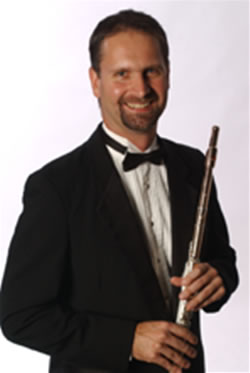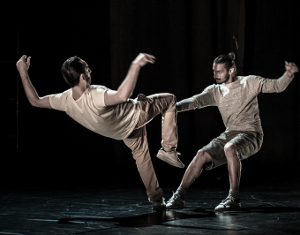Perhaps the series of heavy thunder storms discouraged turnout in Dana Auditorium for the second of two full-sized student-staffed EMF Young Artists Orchestras. Music lovers on hand for their next–to-last Friday concert heard solid performances of a diverse program of less often heard compositions. The program was under the able baton of José-Luis Novo who has been the resident conductor at the Eastern Music Festival since 1999.
Composer Isaac Albéniz (1860-1909) was a major force in the creation of a truly Spanish national style. Anyone who loves Spanish rhythms or Impressionist works with Iberian color ought to become familiar with Albéniz’s twelve piano compositions collected in four books under the title Iberia. Most of the pieces evoke the Andalusia region which retains Moorish influences. Conductor Enrique Fernández Arbos made one of the most popular orchestral versions. Novo led his young musicians in one excerpt, “Triana” from Book II. According to Michael Murray in his program note for the Telarc recording of Iberia, “it depicts a neighborhood in Seville that was known for the richness and vibrancy of its cultural ferment.”
Novo led a fine performance characterized by well-sprung rhythms and plenty of verve. The strings played with considerable sophistication. They were always precisely together and responded instantly to sudden changes of tempo or dynamic. Pizzicatos were very refined and varied. Highlights were the muted trumpets and very good solos from flutist Chung Eun Chae, French horn player Philip Koonce, and English horn player Carly Gordon.
Lowell Liebermann (b. 1961) is one of the most prolific and successful composers of his generation having created eleven concertos, three symphonies, and two operas to date. His Concerto for Flute and Orchestra Op. 39 is fascinating and immediately appealing. It is in three movements. The first movement opens with serene lyrical flute melody supported with a “tick-tock” staccato accompaniment that leads to a set of variations building to a dramatic climax before returning to the gentle mood of the opening. The second movement spotlights the flute soloist with what program annotator Steven Ledbetter describes as “a flowing gentle melodic line over a syncopated ostinato pulsing quietly underneath, generating delicate harmonic dissonances that urge the soloist along.” The finale gives the soloist ample opportunities for virtuoso display with challenging tempos and double-tonguing. EMF faculty principal flute Les Roettges, now in his 10th year with the EMF, played the concerto brilliantly with marvelous breath control and amazing precise articulation at increasingly rapid tempos. His palette of color and dynamics was wonderful. Novo led his musicians in an accompaniment that fitted like a glove. The trumpets were remarkably restrained in the hushed p first movement as were the strings’ subtle pizzicato support. Concertmistress Queenie Edwards played her second movement solo superbly. One of the striking features of the finale was the sound of the solo flute sandwiched between the tonal extremes of the brazen piccolo played by Dominique Kim and the pungent contrabassoon played by Hanul Park.
Brahms played a vital role in the growth of Antonín Dvořák (1841-1904) by insisting his publisher Simrock issue editions of the Czech composer’s symphonies. Dvořák’s Symphony No. 6 in D, Op. 60 has stretches of music sounding very much like the orchestration of Brahms’ Second symphony. The sunny opening movement’s theme is unselfconsciously built into a glorious, robust structure. The gorgeous adagio is constructed around a single theme. The spirit of folk music is seldom far from the Czech composer’s work. The third movement is in the form of a Czech dance, the “Furiant” which Ledbetter describes as a dance “in which the triple meter is filled with constant shifts.” The finale begins quietly, is dominated by “a dance-like character,” and builds to a full, resounding end. Novo led a solid and idiomatic performance. The low strings, violas, cellos, and basses were wonderfully full and rich. The horns were marvelous and, a fleeting episode of coordination aside, the trumpets, trombones, and tuba were fine. The warmly phrased oboe solo in the first movement was played by Carly Gordon. Highlights of the second movement were solos from flutist Lydia Selikhov, clarinetist Austin Yueh, with Melanie Hudson on French horn.












